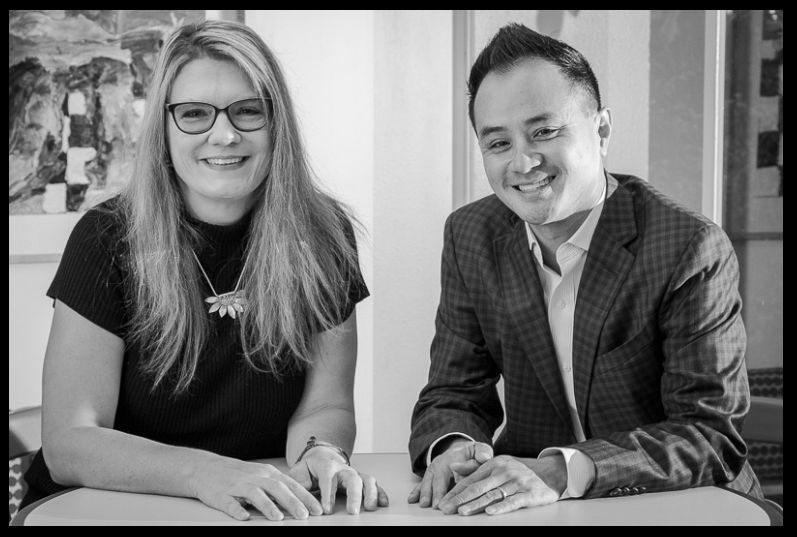Meet the Leaders of Seattle University’s Progressive Counseling Program

Image: Pavel Verbovski
With the newly revised program launched one year ago, graduate students who pursue a master’s degree in Clinical Mental Health Counseling or School Counseling are among the only in the country who will graduate and be eligible to pursue post-master’s chemical dependency certification required to do addiction counseling—in just three years. The graduate counseling program integrated a chemical dependency component into its curriculum, which prepares both mental health and school counselors to offer integrated care. This kind of holistic, integrated approach is what makes Dr. Mary Amanda Graham, associate professor of counseling, and Dr. Manivong J. Ratts, Department Chair, particularly excited about the curriculum, which reflects the university’s commitment to social justice values.
How does social justice apply to your program?
Dr. Ratts: We incorporate social justice from admission all the way through graduation. What makes our graduate counseling program different and unique is that we look for students who have the potential and capacity to be an agent of change and who are willing to challenge status quos in communities and in schools through systemic change. The program’s belief is that sometimes mental health issues are rooted in the environment. For this reason, counselors must be adept at addressing the toxic environmental conditions that hinder a person’s ability to reach their potential. We seek applicants who are interested in doing more than just direct counseling. Instead, we want people who seek to change the world. What have they done in the past to help them become a change agent? When students are admitted into the program, they learn both individual counseling and social justice advocacy counseling skills.
Dr. Graham: I am first generation, low income. Both my parents had 8th grade educations and were migrant workers. I was the first in my family to graduate from high school, not to mention get a master’s degree, so I am that person my students are helping. What I really appreciate about my program is that it allows me to keep up my skills as a practitioner in the community. We’re not just in the ivory tower. Most of us still work in the communities that we teach about or, in my case, come from. I was a school counselor for three years in Warden, Washington, serving mostly Hispanic families in a low-income district, and I worked in marginalized communities in corrections. I also volunteered to counsel students at the alternative Middle College High School at Seattle U, and partnered recently with an English teacher from Gates High School to develop a curriculum that focuses on institutional racism and social justice.
Since there’s so much emphasis on real-world problems and solutions, how do you bring the real world into the program?
Dr. Ratts: In the last year of the program, students complete an advocacy project. They have to identify an equity issue at their internship site and among the population they’re serving, find a solution, and then collect data to determine the efficacy of their efforts. While other programs tend to focus on helping students develop basic clinical skills, which we do as well, we incorporate system advocacy so that students are more equipped to handle the real-life issues that clients from marginalized communities bring to counseling. For example, we had a group of interns create a Pride Center at Nathan Hale High School in Seattle because they recognized a lack of systemic support there for the LBGTQ community. Their work led to the second gender-neutral bathroom in all of Seattle Public Schools last year.
Dr. Graham: These advocacy projects are amazing. For instance, one student who’s bilingual in Spanish and English realized that her school was centered in a large Spanish-speaking population. Yet whenever the school offered educational nights for parents on topics like college admissions, they always gave the presentation in English, with a Spanish translator. She reasoned that it would make better sense to do the presentation in Spanish and bring in an English translator. Another looked at why certain segments of the population attended parent nights, while others didn’t. She made a map of the community and identified people from a neighborhood who had a particularly low turnout. She then came up with the idea to bring the sessions to their community center, instead of only giving them at school. It’s about confronting policy barriers for the underprivileged. How can we influence the system and not just accept the norm?
What kind of jobs would students from your program expect to get?
Dr. Ratts: Graduates of our program work in K-12 schools, colleges/universities, hospitals, mental health agencies, and in private practice. What makes our graduates unique is that they are able to pursue post-master’s chemical dependency certification hours, which allows them to do addictions counseling in schools and mental health agencies. Whatever they choose, we encourage them to bring psychological services to the community.
Click here for more information about Seattle University’s College of Education.
